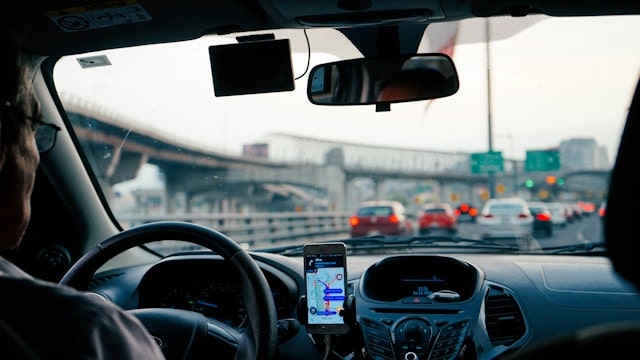What Is the Most Common Type of Collision Between Cars and Motorcycles?
By Ben Gobel on October 17, 2024

f you ride a motorcycle, you are probably well aware of the potential dangers of car and motorcycle collisions. According to the National Safety Council (NSC), motorcycles are only 3% of all vehicles on the roads across the country.
Of all types of accidents involving motor vehicles, accidents involving motorcycles for 2022 comprised 3.5% of all injuries and 14.6% of all traffic fatalities. No matter how careful you are while riding, collisions occur every day—it may be only a matter of time until you’re in an accident on your motorcycle.
One of the biggest issues with motorcycle accidents rarely involves a rider’s ability. The issue is that injured motorcyclists after these crashes are often the ones who are blamed, even when they did nothing wrong. In these situations, it’s wise to consult a motorcycle accident lawyer in Pittsburgh to discuss your legal options.
Ogg, Murphy & Perkosky, P.C. is a law firm that represents car and motorcycle accident victims. This blog post reveals what types of motorcycle crashes are most common, provides safety tips, and the vital steps to take after these car accidents.
Types of Motorcycle Accidents
Car drivers must be vigilant on the roads to watch out for other passenger vehicles, motorcyclists, pedestrians, and bicyclists. Paying attention can help prevent a car accident. When it comes to cars and motorcycles, these types of accidents are most likely to occur:
Head-On Collisions
A head-on collision with oncoming traffic is most likely to produce a fatal result. As a car and motorcycle collide head-on, their speeds are coming together in opposite directions, making survival unlikely.
Side-Impact Collisions
Also known as T-bone accidents, side impact accidents occur when drivers run red lights or stop signs. It can even occur when speeding through a parking lot or when the driver is intoxicated.
Rear-End Collisions
Cars and motorcycles alike must maintain proper distance between them. Motorcycle crashes that involve a rear collision mean that the driver at the rear was likely following too closely.
Lane Splitting Accidents
Lane splitting occurs when a motorcyclist rides between two lanes during times of congestion when traffic has slowed to a crawl or is completely stopped. This can result in serious injury for a motorcycle rider.
Left Hand-Turn Collisions
Left turn accidents are devastating for motorcycle riders. When a passenger vehicle makes a left turn, it may collide with a motorcycle going straight through an intersection.
Illegal Lane Change and Merging Collisions
Merging and sudden lane changes, especially illegal lane changes, are another reason motorcyclists wind up in accidents. Drivers must take care when switching lanes and check blind spots before they change lanes.
Which Is the Most Common Type of Motorcycle Accident Involving Car Drivers?
The most common type of collision is a left-turn collision. When a driver turns from the left lane, it’s more difficult to see an oncoming motorcycle amid the rest of the traffic. Since motorcycles tend to blend in with the background, many drivers don’t notice them, even when they’re in the same lane.
Distracted driving plays a big role in this, creating significant risks for any approaching motorcycle. Even though drivers turning left make for the most common type of crash with motorcycles, all of these collisions have the potential to result in serious injury. If you’re in a motorcycle wreck, contact a motorcycle accident lawyer as soon as possible to protect yourself from being blamed rather than the other drivers.
Prevention Tip for Motorcycle Collisions
As a motorcyclist, you must do your part to avoid accidents with other vehicles that could result in serious injuries. If you’re new to riding a motorcycle, it may benefit you to learn a few extra defensive driving techniques to bolster your confidence on the road. It’s also important to remember not to lurk in a car’s blind spots where you may easily escape the driver’s attention.
In addition to staying out of a car’s blind spot, exercise caution with your motorcycle’s speed and follow traffic laws. This may not prevent all collision types, but when car occupants in another vehicle can see you were following traffic rules, it may help your case when determining fault.
As you remain vigilant and follow posted speed limits, keep in mind that a motorcycle crash can occur in just a few seconds. You can slow down to just below the speed limit when going through an intersection, which will help if a driver decides to suddenly pull out in front of you.
Finally, make sure you use safety features on your bike as well as protective gear that can save you from road hazards and severe injury. Wearing reflective gear can make you stand out to drivers, and wearing a DOT-certified helmet is your best defense against severe injuries in a severe collision.
Steps Motorcycle Riders Should Take If They’re Hit by a Car Driver
When you’re at the accident scene, whether there was one vehicle or another party involved, it is in your best interests to protect your legal rights. The insurance company will likely try to blame you rather than the other parties involved because you chose this mode of transport. Motorcycles do leave riders more vulnerable, however, it doesn’t mean you deserve to get into an accident.
Make sure you call the police, visit the hospital or urgent care to treat your injuries, and gather evidence in the form of photos, videos, and witness statements. You should also contact an attorney following medical treatment to get the legal representation you need.
If you drive a car, you’ll want to speak with a car accident lawyer in Pittsburgh, but motorcyclists will want to discuss their case with a personal injury lawyer who represents motorcycle accident victims. You’ll find both types of personal injury attorneys at the law firm of Ogg, Murphy & Perkosky, P.C.
